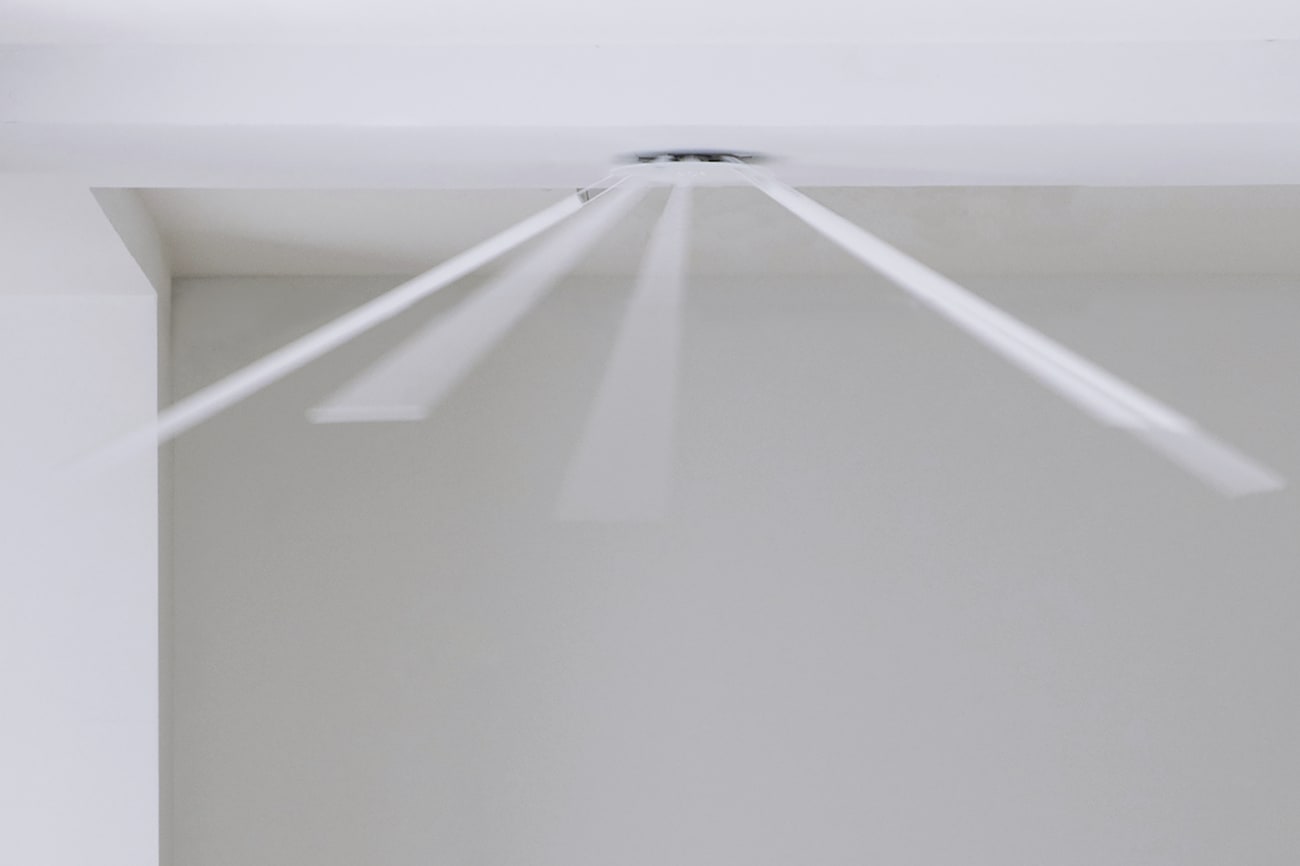Susanna Fritscher
Flügel Klingen, 2017
1 sound piece, rotative motor, 6 tubes in Plexiglas
Ø 40 mm. variable dimensions
Further images
Fritscher inspires onlookers to perceive our surroundings anew. She reinvents our relationship to reality, to space, to the environment within which her spacious and minimalist works exists. Working primarily in...
Fritscher inspires onlookers to perceive our surroundings anew. She reinvents our relationship to reality, to space, to the environment within which her spacious and minimalist works exists. Working primarily in white she purposely confuses atmosphere with architecture to create something liquid, aerial and vibratory.
About her more recent inclusion of sound in her work she notes “My first sound works (2011-2015) – performed, recorded or played in exhibition spaces – explored the eruption of the voice and tried to detect how sound is formed in our vocal cords”.
She continues that her recent projects “...emancipate themselves from the relationship to the body, the apparatus of the voice becomes abstract: it is reconstructed in sound sculptures composed of tubular elements gravitating around an invisible rotating motor. When the circular motion accelerates, it increases the force of the flow and sets the columns of air inside the tubes into vibration, producing a fundamental, almost imperceptible frequency. As the speed rises, the frequency amplifies, shifts and invades the surrounding space. While the work dissolves into the air and dematerialises, it is transformed into sound: the rhythmic play of the vibrations becomes a spatial experience. From the physicality of the voice to the sound sculptures Flügel Klingen (Sonic Propellers), from the resonant landscape of Frémissements (Centre Pompidou-Metz, 2020) to Pulse presented at the Forum Ginza Maison Hermès in Tokyo in 2023, my sound works have expanded in space. Visual, acoustic and spatial approaches have joined to create aerial, vibratory landscapes that are in dialogue with a fragile world.”
About her more recent inclusion of sound in her work she notes “My first sound works (2011-2015) – performed, recorded or played in exhibition spaces – explored the eruption of the voice and tried to detect how sound is formed in our vocal cords”.
She continues that her recent projects “...emancipate themselves from the relationship to the body, the apparatus of the voice becomes abstract: it is reconstructed in sound sculptures composed of tubular elements gravitating around an invisible rotating motor. When the circular motion accelerates, it increases the force of the flow and sets the columns of air inside the tubes into vibration, producing a fundamental, almost imperceptible frequency. As the speed rises, the frequency amplifies, shifts and invades the surrounding space. While the work dissolves into the air and dematerialises, it is transformed into sound: the rhythmic play of the vibrations becomes a spatial experience. From the physicality of the voice to the sound sculptures Flügel Klingen (Sonic Propellers), from the resonant landscape of Frémissements (Centre Pompidou-Metz, 2020) to Pulse presented at the Forum Ginza Maison Hermès in Tokyo in 2023, my sound works have expanded in space. Visual, acoustic and spatial approaches have joined to create aerial, vibratory landscapes that are in dialogue with a fragile world.”
Provenance
from the Artist’s studio
Exhibitions
Musée d’arts de Nantes, France, 2017, De l’air, de la lumière et du temps.







